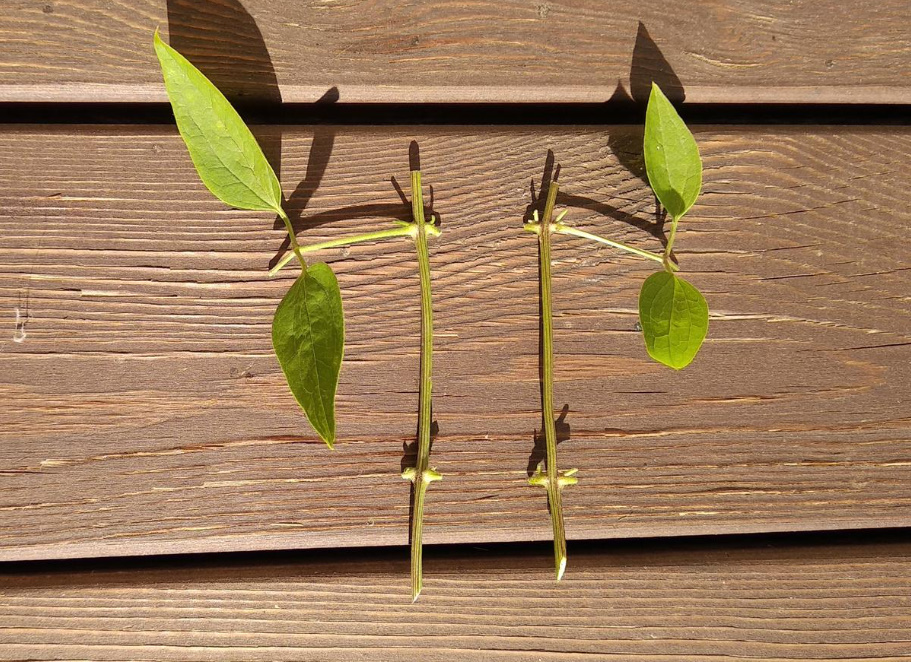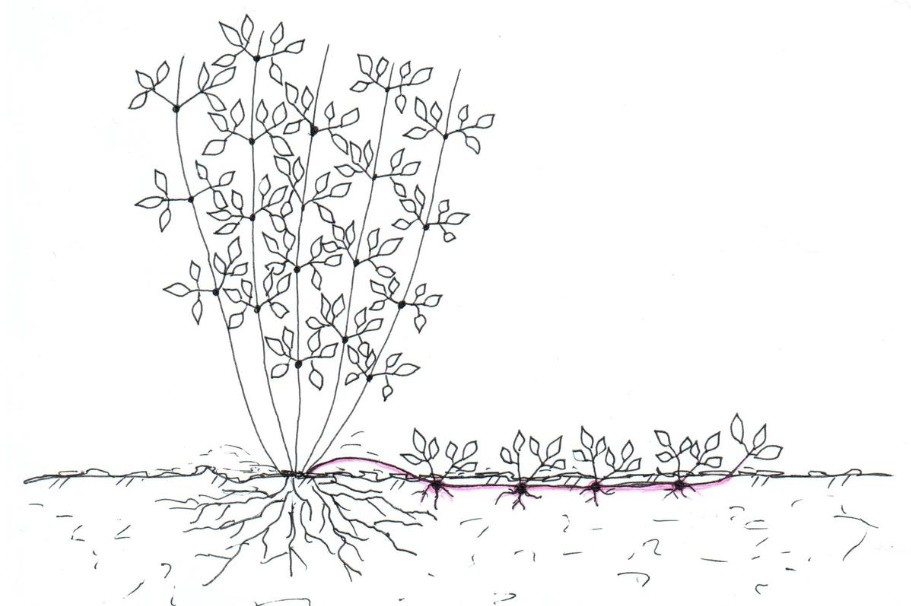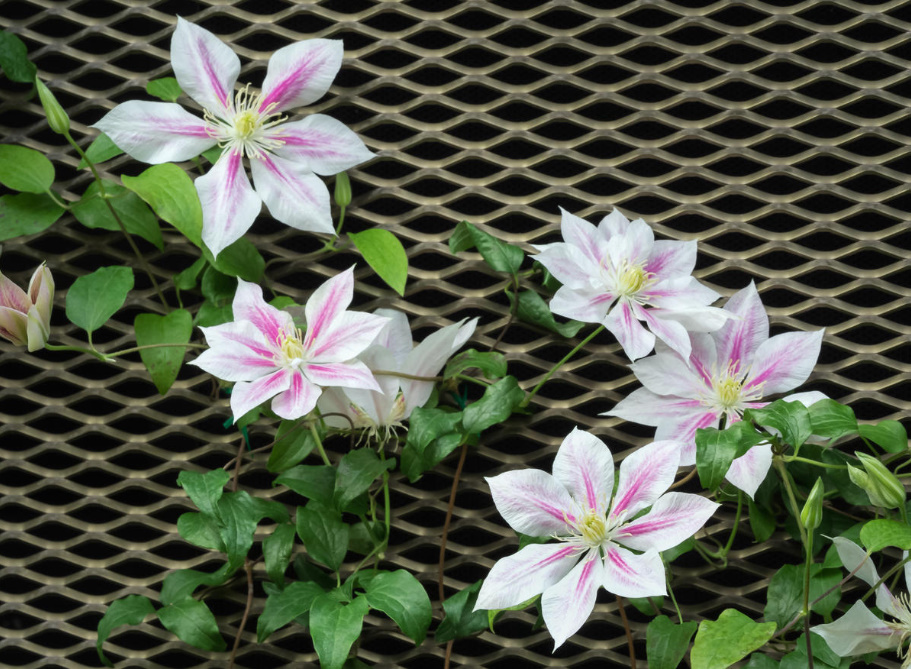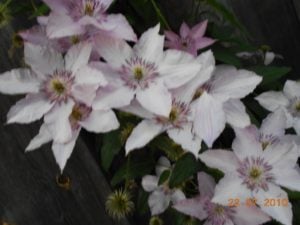
Green cuttings
The optimal time for cutting green cuttings is the budding period, in the middle band — approximately after June 15 and until the beginning of July. The shoot for cutting should be flexible and not break when bending. We cut off the whip and cut cuttings from it with two knots: an oblique cut from below, a straight cut from above. Both leaves of the lower node must be removed, and one should be left on the upper kidney. Before planting, the lower parts of the cuttings need to be immersed for 3-5 hours in a solution of a root formation stimulator.

The soil mixture is prepared in almost the same way as for rooting lignified cuttings. In summer, it is better to plant cuttings immediately on a bed with moist, loose soil. It is not necessary to bury much — it is enough that the lower pair of kidneys is underground. We cover the upper part of the stalk with a transparent container (for example, a trimmed plastic bottle) or install arcs with a polyethylene shelter to preserve moisture. If the bed is in a sunny place, then the planting needs to be shaded.
3. Rooting layering
In the warm period, you can easily get new plants by digging a young shoot. The optimal time for breeding by layering is the beginning of summer. To do this, you need to choose a suitable whip and make a groove next to it along its entire length, except for the crown. Without cutting off from the mother plant, we put the shoot into a groove and sprinkle it with soil so that the stem and nodes are in the ground, and the leaves are above it. Additionally, you can press the location of the kidneys with a stone or a hairpin so that they do not rise above the ground as a result of erosion by rains. Also, you can not stack the entire shoot, but press only 1 node, giving the rest of the support.

During the summer, it is necessary to maintain good humidity on this bed, and by autumn the layering will take root: roots from each node will appear. But it is too early to plant each of the plants in its place, you need to wait for the next season. In the spring, all new vines will wake up, over the summer they will build up a good root system, and in August or early autumn you will be able to safely plant them in a permanent place.
4. Division of the bush
On the one hand, this is an easy way to get several practically adult plants at once. On the other hand, the procedure for dividing clematis is quite complicated. This culture has a bad attitude to any manipulation of the roots, so you need to do everything very carefully. This operation should be taken when the plant needs to be transplanted to another place for objective reasons, or if rejuvenation is required (that is, the bush has grown much and aged). The best time is early autumn, it is also possible to do this in the spring, immediately after thawing and drying of the earth and before the buds start to grow, but it is very difficult to catch the right time in the spring.

Planting pits for plants need to be prepared in advance and properly shed them. An old bush (at least 6-7 years old) must be cut off, leaving 3-4 pairs of buds. Then we dig it out with the largest possible lump of earth (it should not be dry, if necessary, spill the plant on the eve) so as to preserve as many roots as possible. Gently shake off the soil and rinse the root system with water — so it will be clear in which place to cut (the old bushes look as if they consist of several small ones).
Each division should have a sufficient number of roots and 3-4 shoots with buds, they should be immediately planted in a new place or in a container.

We have considered the main ways of reproduction of clematis, but there are others. For example, you can graft a particularly valuable variety, which is difficult to take root, on a specific rootstock. Or — resort to the Japanese method, which involves the use of slightly grown 2-3-year-old seedlings for cutting cuttings. But these methods are more interesting for collectors or getting a quick income from the sale of plants.
Before deciding on a purchase, be sure to study the accompanying information regarding the origin of a particular variety. Information of this kind can be easily found on the Internet. Indirect data is usually given on the tag accompanying the clematis — the type of pruning and the hardiness zone are usually indicated there.
Do you breed clematis? Share which varieties you were able to breed in your garden from a small cut or seed.




Leave a Reply